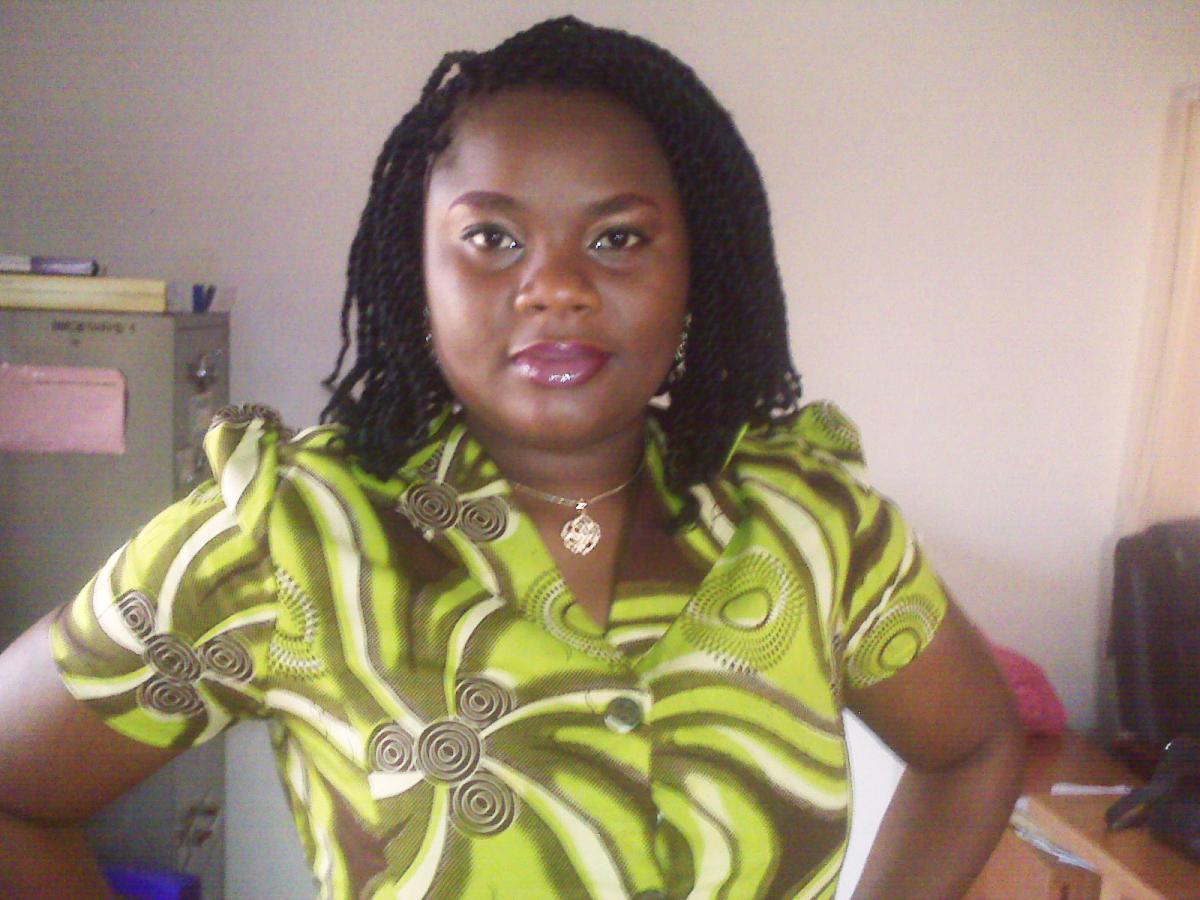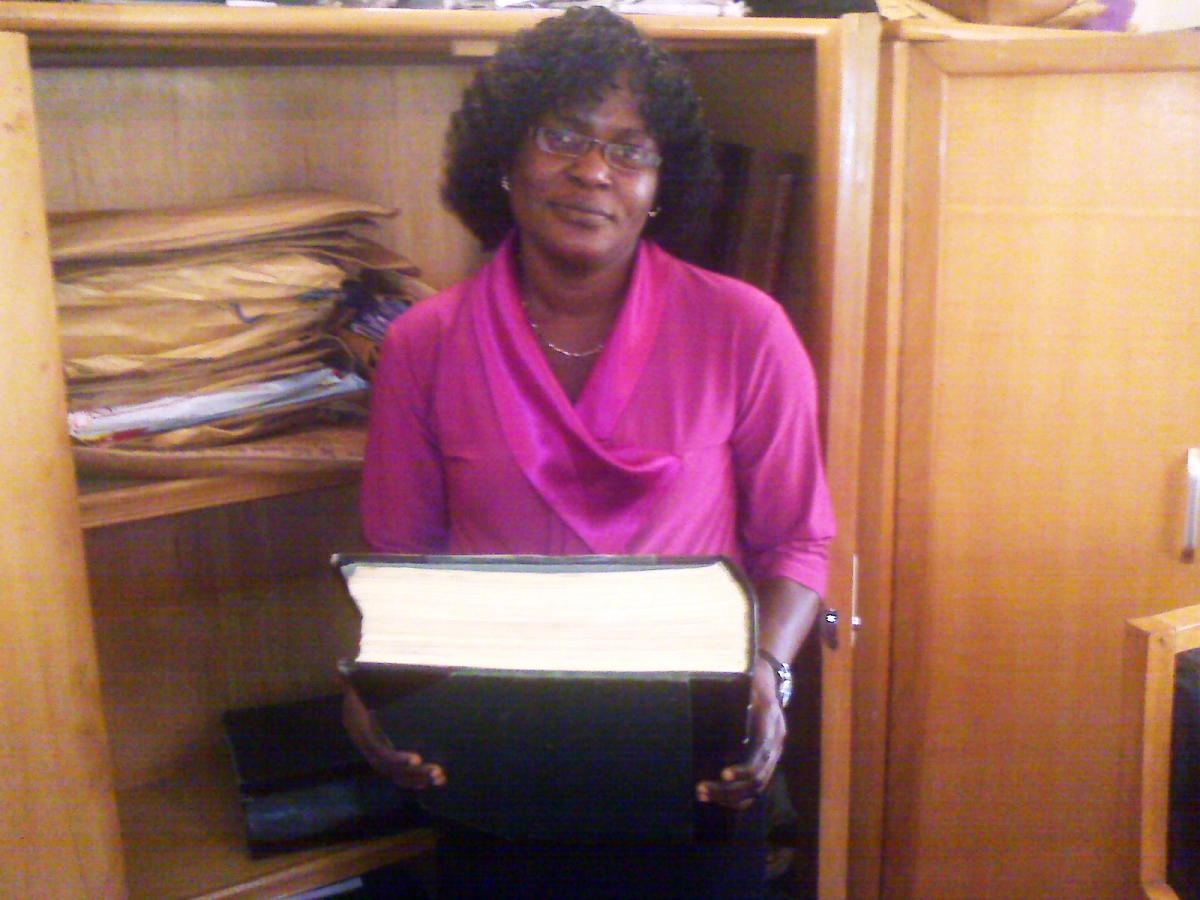
iHRIS Helps Cure Backaches in Nigeria
I’ve been writing about the open source iHRIS software for years, explaining how it can help with health workforce management and planning, and praising the advantages of open source for country ownership and sustainability. A recent e-mail conversation about iHRIS in Nigeria reminded me of some of the important benefits of the software, and shed light on a new one.
“I will send a copy of my picture after this mail. It will be nice to have a copy of yours also.”
This is the photo Oluchukwu Ifele sent me. She’s a supervisor at the Nursing and Midwifery Council of Nigeria and, from her photo, she seems to exude authority and confidence, and perhaps the power of data.
Oluchukwu is helping implement a customized version of iHRIS Qualify at the council, and is overseeing a team of clerical officers and data entrants. I posed a few questions to learn how the council is using the system to track over 146,000 qualified nurses and midwives. Following are some excerpts from her subsequent e-mails.
“In iHRIS we have a database that has all the information of all cadres of nurses and midwives, so we can at any time call up any nurse or midwife's record from that data base. Also, through iHRIS we can update our nurses' records when they apply for a renewal of their license.”
Finding an individual nurse’s or midwife’s record wasn’t an easy task before, when the council relied on a paper-based system with 70 bound registries containing information on 19 different cadres of nurses and midwives. Oluchukwu noted that manually aggregating information into reports for analysis and planning was even more time-consuming.
“It took us about 2 weeks to be able to bring up reports at the end of each month and they were not readily available. Also, there were a lot of errors.”
Until recently, the council estimated that there were 240,000 qualified nurses and midwives available for deployment in the country. This was based on the number of health worker records in the registries. After entering the data from the registries into iHRIS, the council discovered the registries contained duplicate records (when a nurse is qualified in one cadre and then receives a higher-level qualification) and that there were far fewer nurses and midwives to provide vital health services to Nigerians. Now, the council can pull up an individual’s record, and know her/his specific qualifications, important for effective deployment, as well as aggregate information for planning and policy-making.
Those 70 bound registers were also physically hard to work with.
“The registers are very big and bulky, to lift [one] is quite a job, thereby causing backache for the handler. It also made them to be on their feet throughout the time they are at work.”
She shared another photo to illustrate her point.

I had never thought about (or written about) how iHRIS can make the jobs of data clerks easier, and could eliminate backaches from working with large paper registries. It’s nice to discover a new benefit of the software! For the council, there are also other, perhaps more reportable, advantages too.
“Through iHRIS we will be able to detect quack nurses and midwives, it will be easier to communicate with our nurses and midwives, and the process of license renewal will be faster thereby reducing waiting period.”
My correspondence with Oluchukwu reminded me that being able to access accurate health worker information quickly is important for people working at all levels of the health system—from planners and policy-makers to data entrants—and also for the health workers who have to travel long distances to apply for, renew, or pick up their licenses. It’s also important for protecting the public and ensuring qualified health workers are delivering services.
CapacityPlus provides technical assistance for implementing iHRIS Qualify at the council. Nigeria is one of several countries in West Africa that are using the iHRIS software to track, manage, and plan their health workforce. A recent technical brief explains the regional approach being used, and provides recommendations for other countries and regions to adapt the approach.
Related items:
Photos courtesy of Oluchukwu Ifele.


